The latest vintage restoration from my shop is this stunning Vogue road bike, built up with its original Suntour Superbe components. It was a surprise find on Yahoo Japan Auctions, sold complete except for wheels and cranks. It was coated in layers of grease, grime and dust. Once I removed the parts and began to clean the frame, a masterpiece of a bicycle came into focus.
Vogue is a true connoisseur’s brand, rarely seen outside of Japan. In the USA, the marque is more often associated with Keirin track bikes. Road versions of Vogue bicycles are very rare. This particular one is a collaboration between Vogue and a Japanese bicycle store called “I Love Cycle Aki” which had a contract with Oriental Kogyo (“Industries”), the formal name for the frame builder behind Vogue, Hiroshi Takahira. Takahira-San made these bikes as one-off customs for Aki customers. It has Vogue and Aki engravings on the seat stays and fork crown. Read on to learn all about Vogue and this bike!
Hiroshi Takahira learned the craft working at Tsuchiya Seisakusho, a.k.a. Everest Cycles, under master builder Toshio Kajiwara. I’ve written about Kajiwara-san before, in my article about Eddy Merckx-branded Miyata bicycles. His influence on Takahira-san can be seen in the latter craftsman’s work, a seamless blend of aesthetics and precision. A comment left on a YouTube video in 2022 stated that it was Kajiwara-san who came up with the brand name, “Vogue,” as an explicit reference to the famous fashion magazine.
Takahira-san left Everest to start his own business around 1980, initially partnering with Yasuaki Kobayashi, a builder of touring bikes who had previously worked at Toei Cycle. Takahira and Kobayashi launched Oriental Kogyo together in Tokyo, but when Kobayashi-san decided to return to Toei, Takahira-san went solo and moved the business to Ofuna, in Kamakura, Kanagawa Prefecture. This was to be his shop for decades, until he retired due to ill health in 2018, passing away a short time later.
Many frame builders begin their careers not as craftsmen, but as professional cyclists, honing their sense of how a bike should handle through racing. Takahira-san followed this path as well, having raced bicycles in his youth. I wasn’t able to find any details on his career as a racing cyclist, but it is undeniable that he combined this experience with an exacting craftsmanship honed at Everest to create works of art in steel.
Two of Vogue’s most famous riders were Japanese professional cyclists Masatoshi Ichikawa and Yukiharu Mori. Ichikawa-san was the first Japanese cyclist to ride for a European professional team, and did so atop a Vogue road bike in 1987-89 when he was a member of the Belgian team Hitachi. At right is a photo of him atop his Vogue, which was repainted as a Rossin, as that was the official bike manufacturer for team Hitachi.
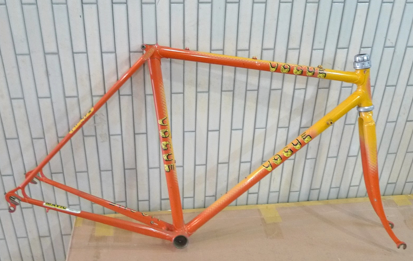 Ichikawa-san had it returned to its original Vogue livery after returning to Japan. Thirty years later, he would help write the next chapter of Vogue, after Takahira-san retired.
Ichikawa-san had it returned to its original Vogue livery after returning to Japan. Thirty years later, he would help write the next chapter of Vogue, after Takahira-san retired.
Takahira-san also received accreditation from the Japanese Keirin Association (Nihon Jitensha Shinkokai, abbreviated as NJS) and built many custom track frames for Keirin racers. His Keirin and road bikes bikes eschew modern flair, evoking an earlier era of Japanese bicycle designs as embodied by Everest and their contemporaries King Speed, Katakura Silk, Venus, and Sannow. Vogue frames are now collector’s items and are sought out by discerning fans of these classic lugged steel bicycles.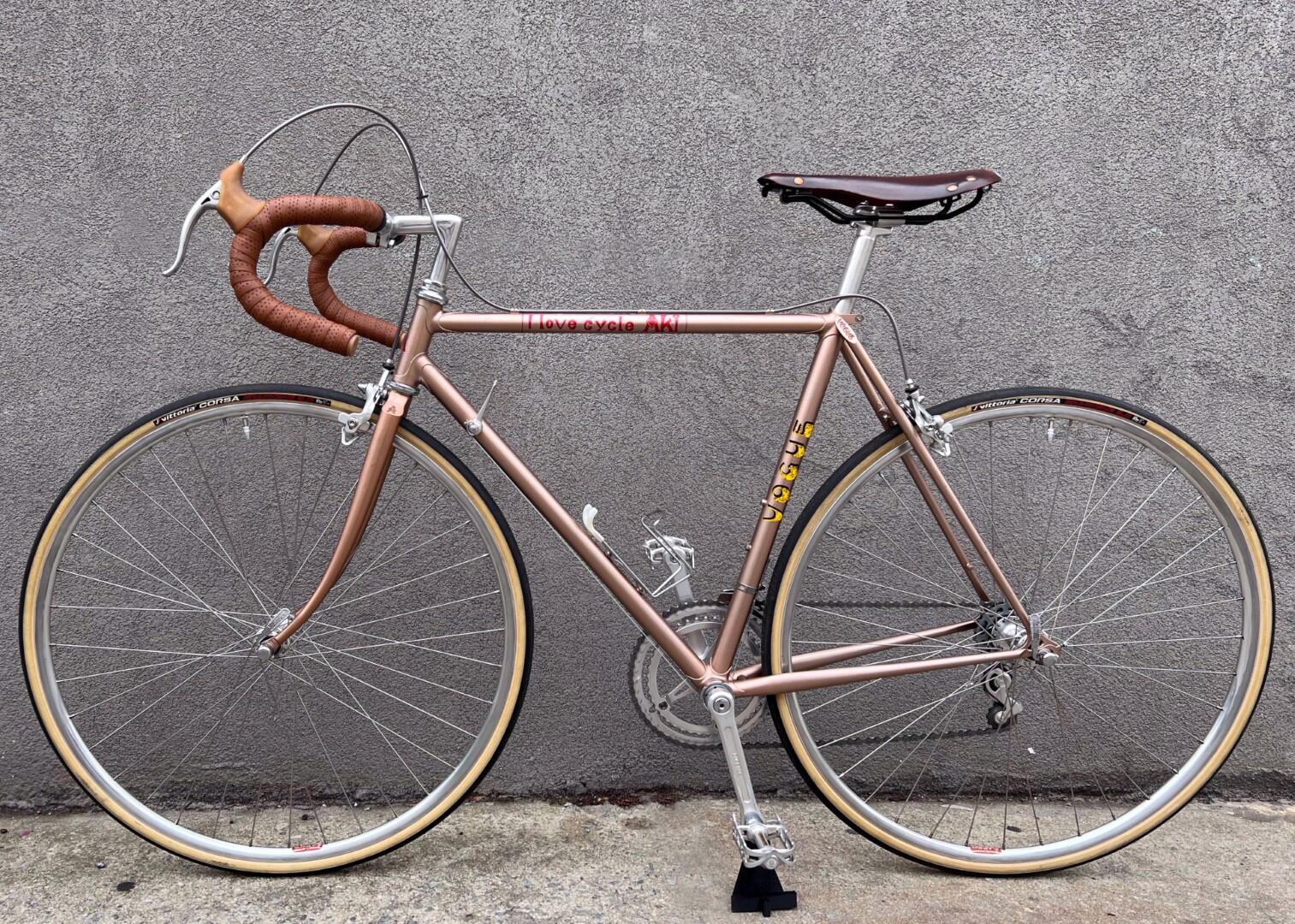 Takahira-san’s expertise in building racing bicycles is immediately apparent when you ride this bike. It feels like a Keirin track bike, accelerating quickly and with very responsive handling. The first time I took it for a test ride, I rode for an hour because I didn’t want to stop! I don’t ride downtube-shifter, friction shifting bikes much these days, and had forgotten what a delight Suntour’s top-shelf equipment is to ride. The shifting is buttery smooth, quiet and utterly reliable. Except for the NITTO stem and handlebars, the components are all Suntour Superbe and Superbe Pro. The brakes, brake levers, crankset, bottom bracket, headset and pedals are Superbe, with Superbe Pro derailleurs, shifters, seat post and hubs. A 6-speed Suntour freewheel and polished silver Araya clincher rims keep it an all-Japanese build.
Takahira-san’s expertise in building racing bicycles is immediately apparent when you ride this bike. It feels like a Keirin track bike, accelerating quickly and with very responsive handling. The first time I took it for a test ride, I rode for an hour because I didn’t want to stop! I don’t ride downtube-shifter, friction shifting bikes much these days, and had forgotten what a delight Suntour’s top-shelf equipment is to ride. The shifting is buttery smooth, quiet and utterly reliable. Except for the NITTO stem and handlebars, the components are all Suntour Superbe and Superbe Pro. The brakes, brake levers, crankset, bottom bracket, headset and pedals are Superbe, with Superbe Pro derailleurs, shifters, seat post and hubs. A 6-speed Suntour freewheel and polished silver Araya clincher rims keep it an all-Japanese build.
I don’t know much about “I Love Cycle Aki” but their logo reminds me of DeRosa, due to the heart shape. I’ve never seen another Vogue X Cycle Aki bike, and not sure I ever will. The dedication to the little details, like the alternating engravings, gives a sense of the understated individuality at the heart of all of Takahira-san’s bikes.
When Hiroshi Takahira closed down his Kamakura shop in 2018, his old friend Masatoshi Ichikawa stepped in to take over the business. The contents of the shop and Takahira-san’s frame building equipment were moved to Ichikawa-san’s Vitesse store near Kanamachi, Katsushika Ward. Vitesse is still in business, although it does not seem that any new Vogue frames are being made. I’m glad to have gotten my hands on one, and intend on keeping it around for the foreseeable future since I don’t think I’ll see another any time soon. Check out the gallery for some more hi-res photos, and please leave a comment if you found this article interesting or have a Vogue bicycle of your own.



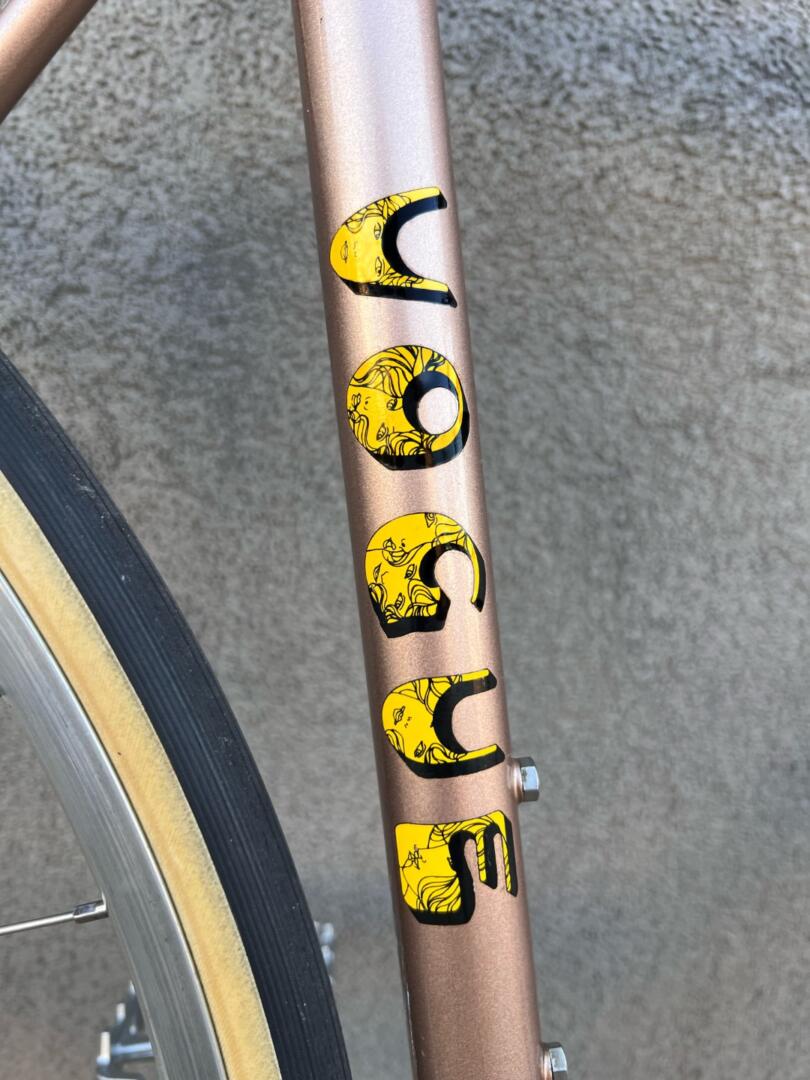
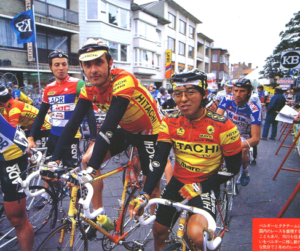
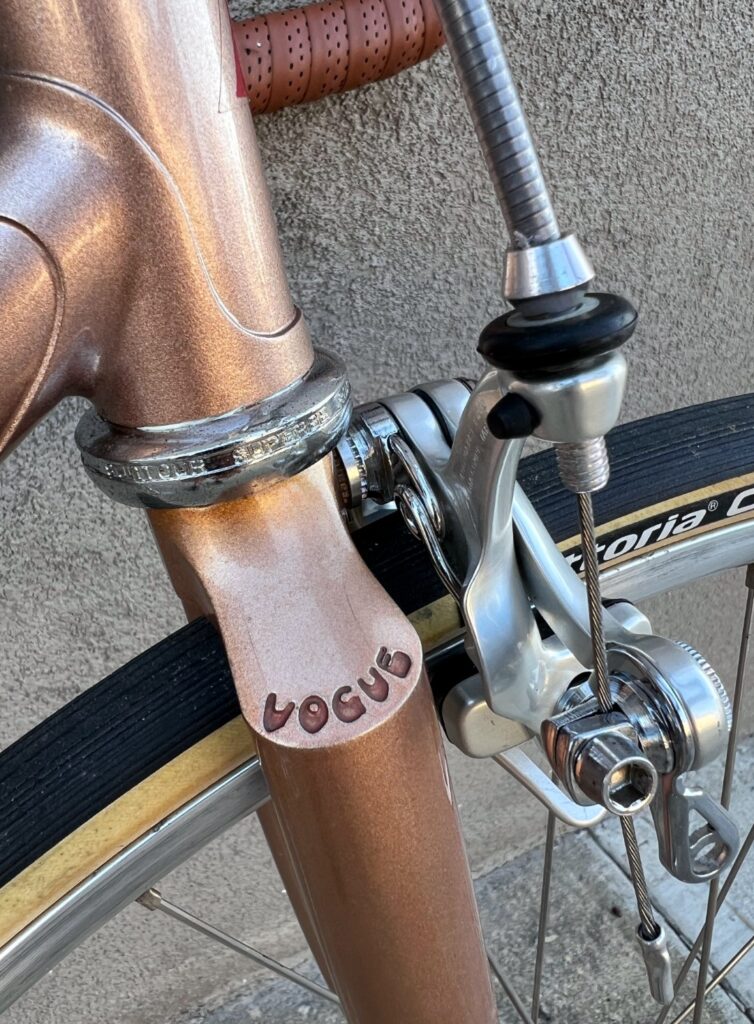
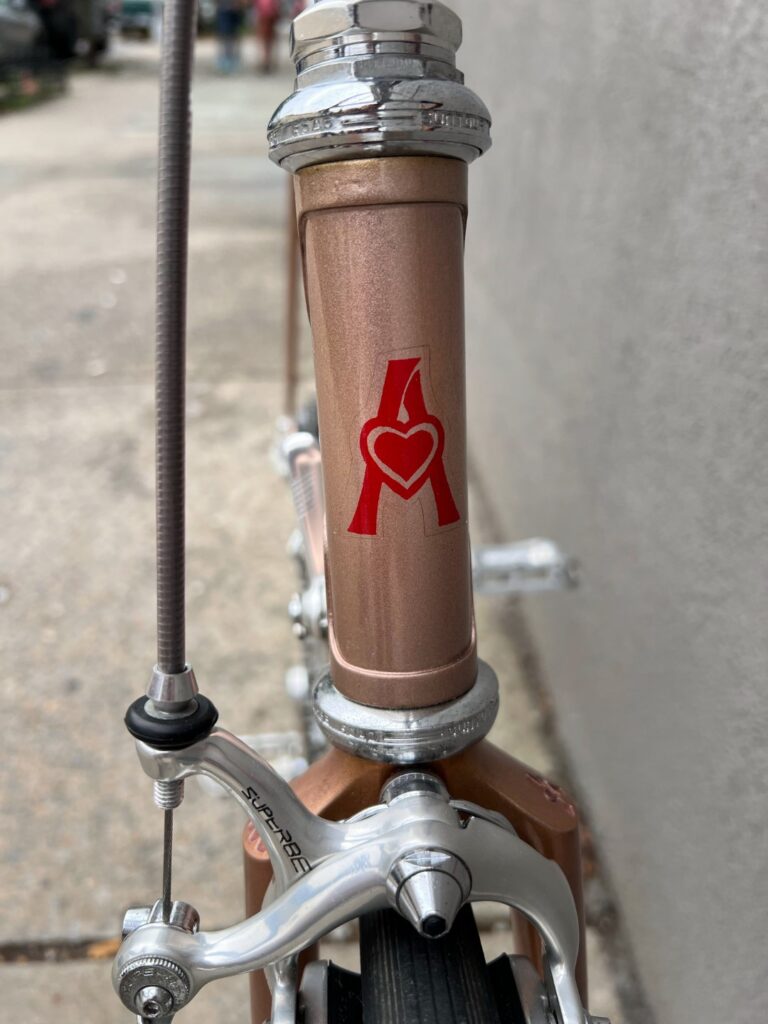
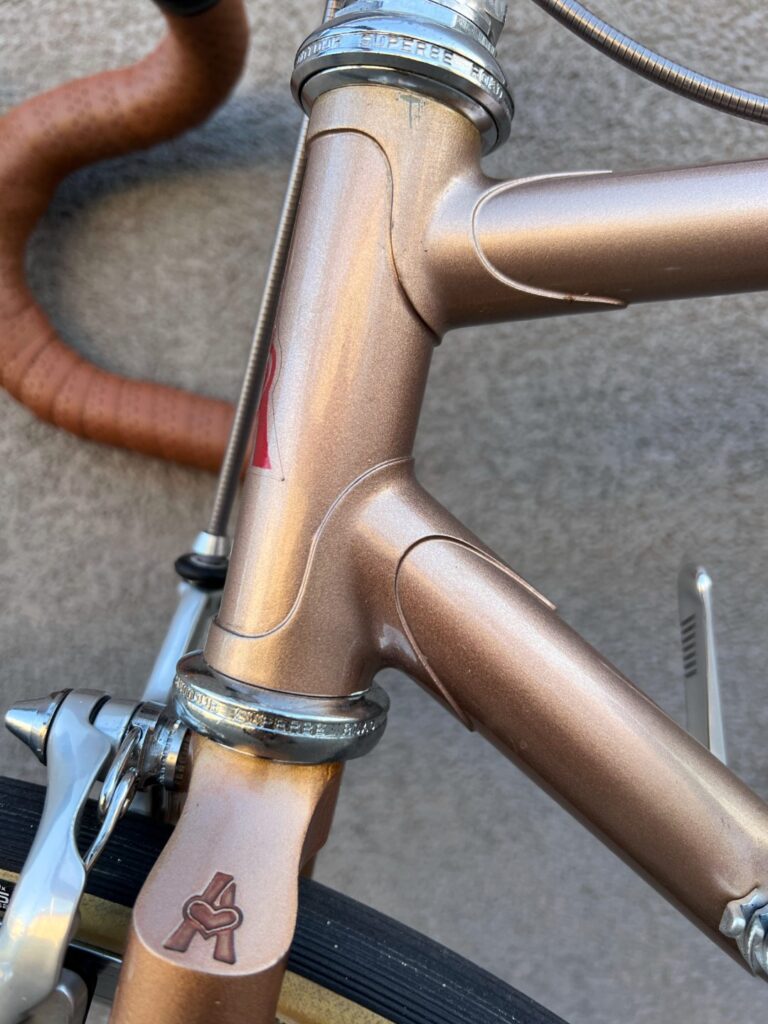

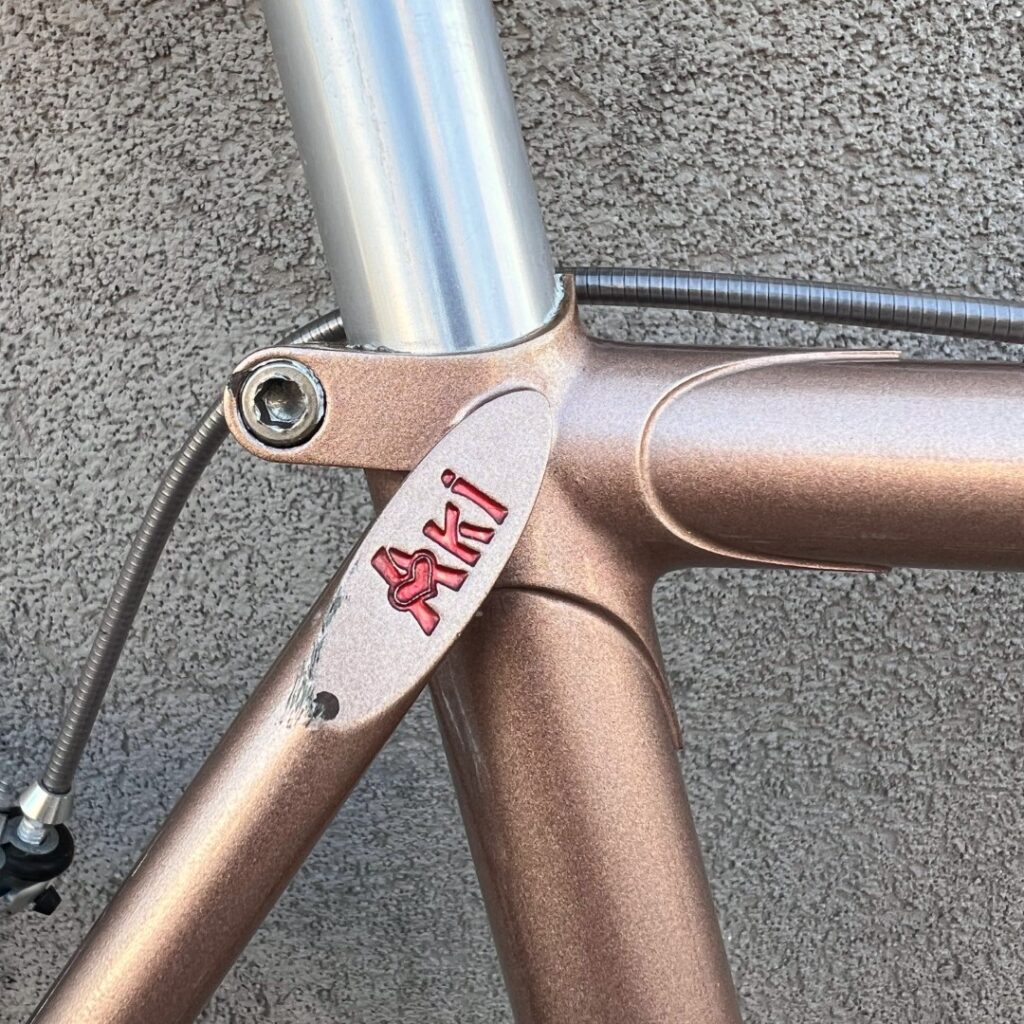
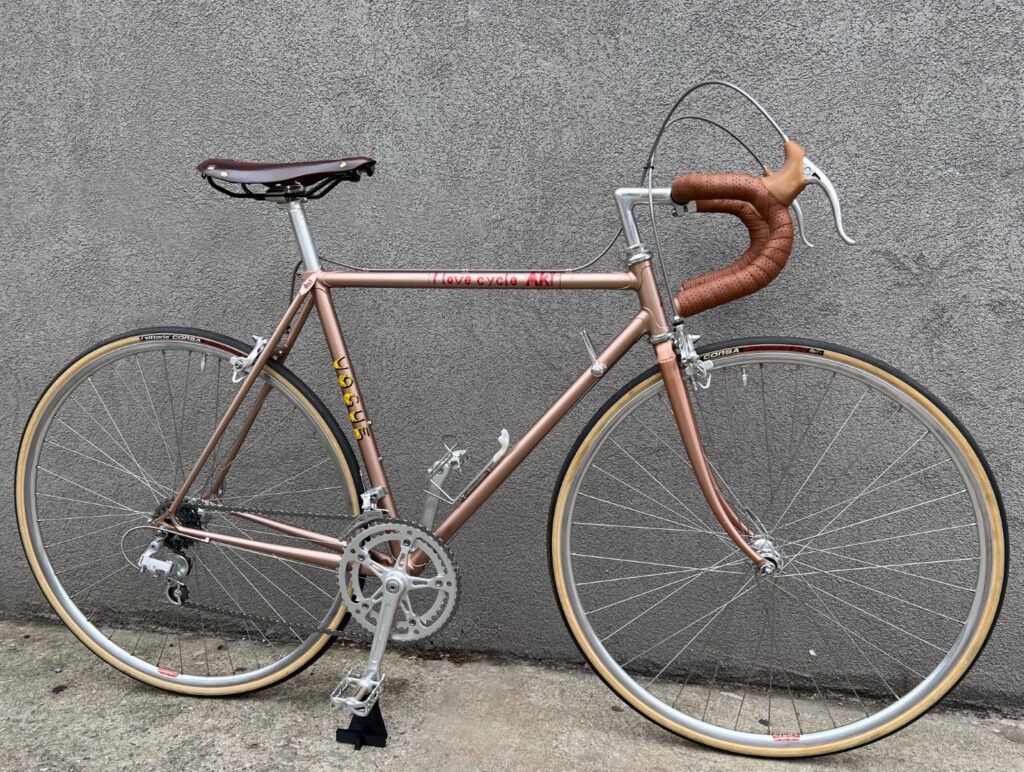
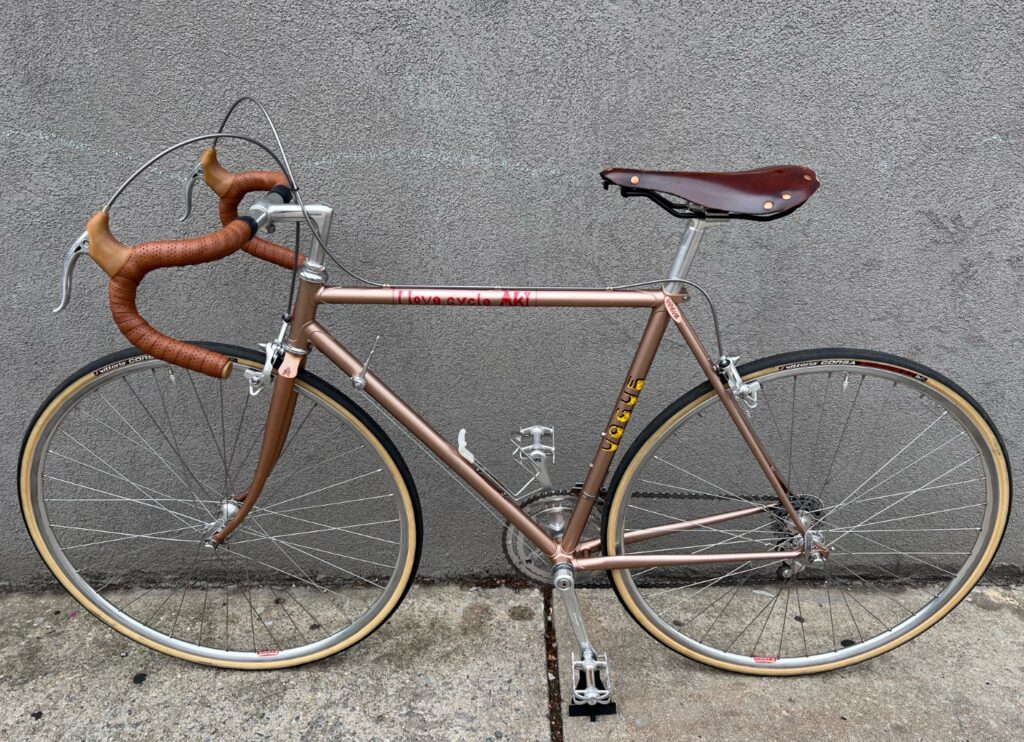
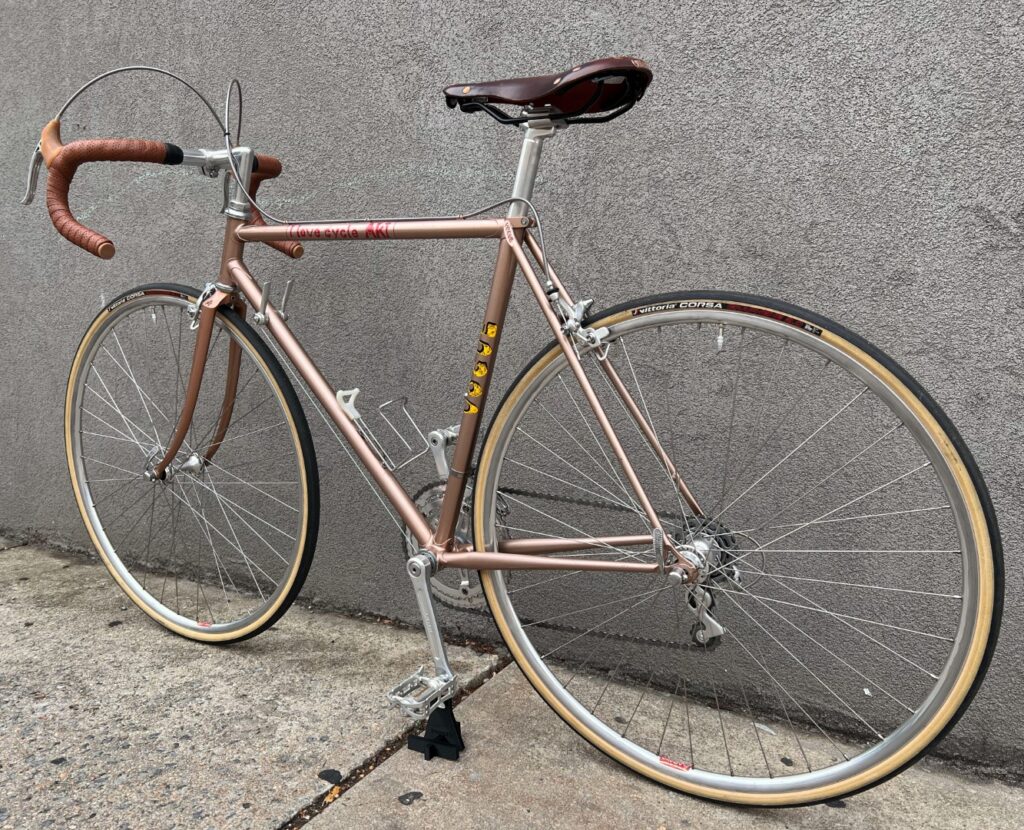
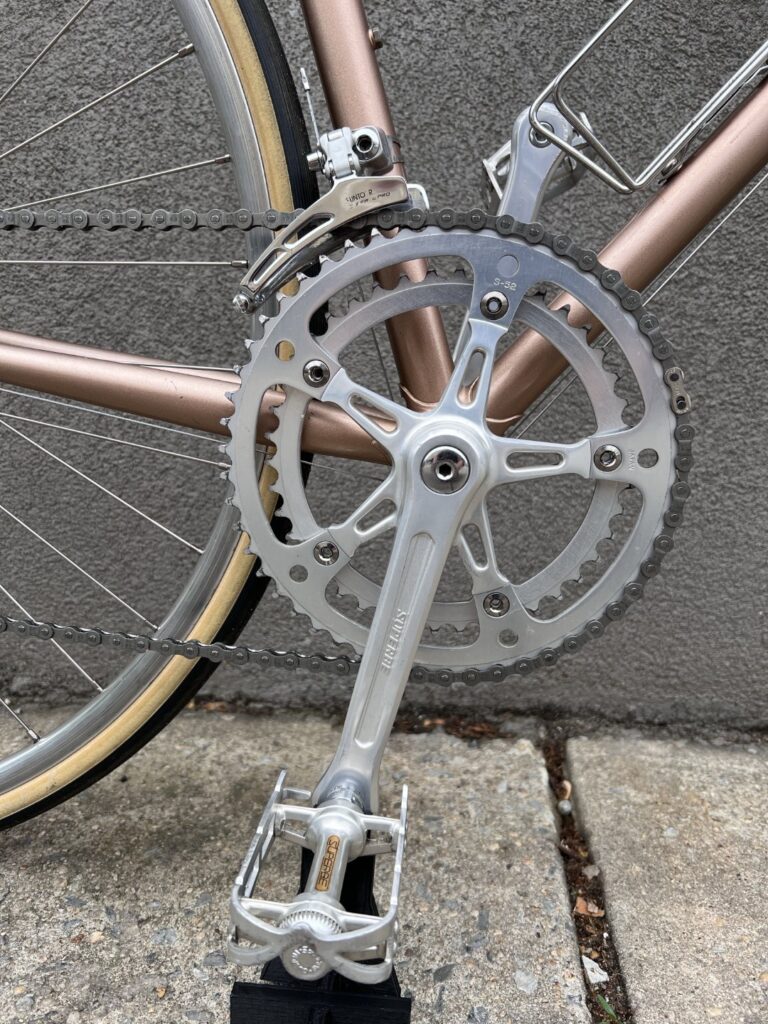
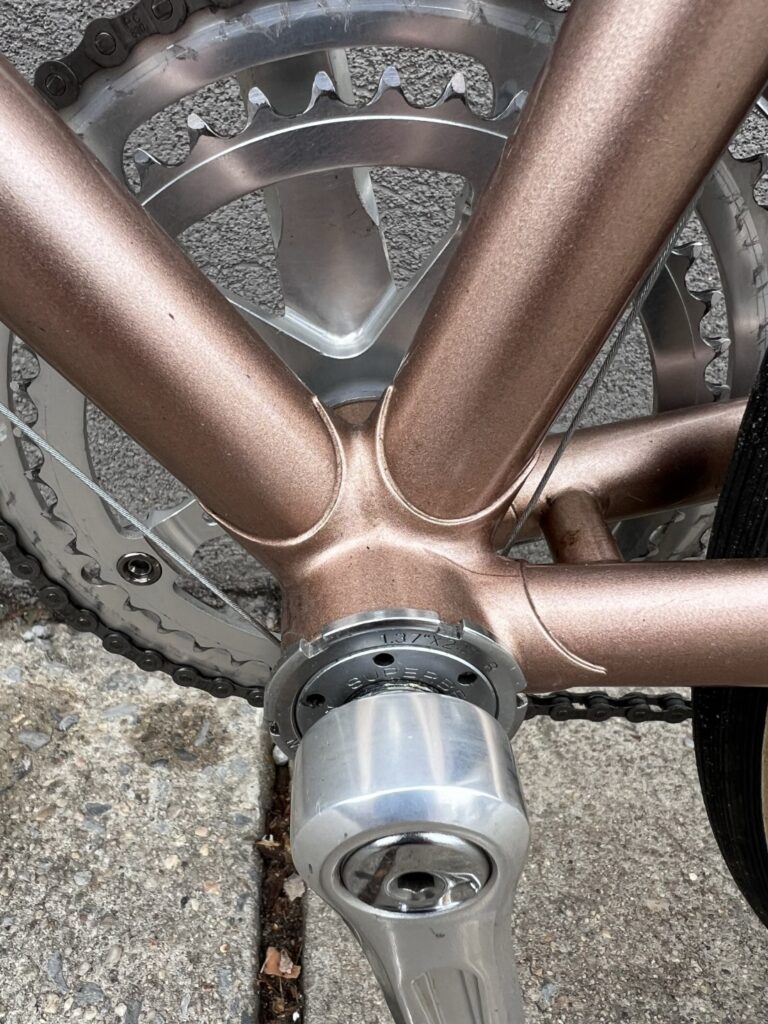
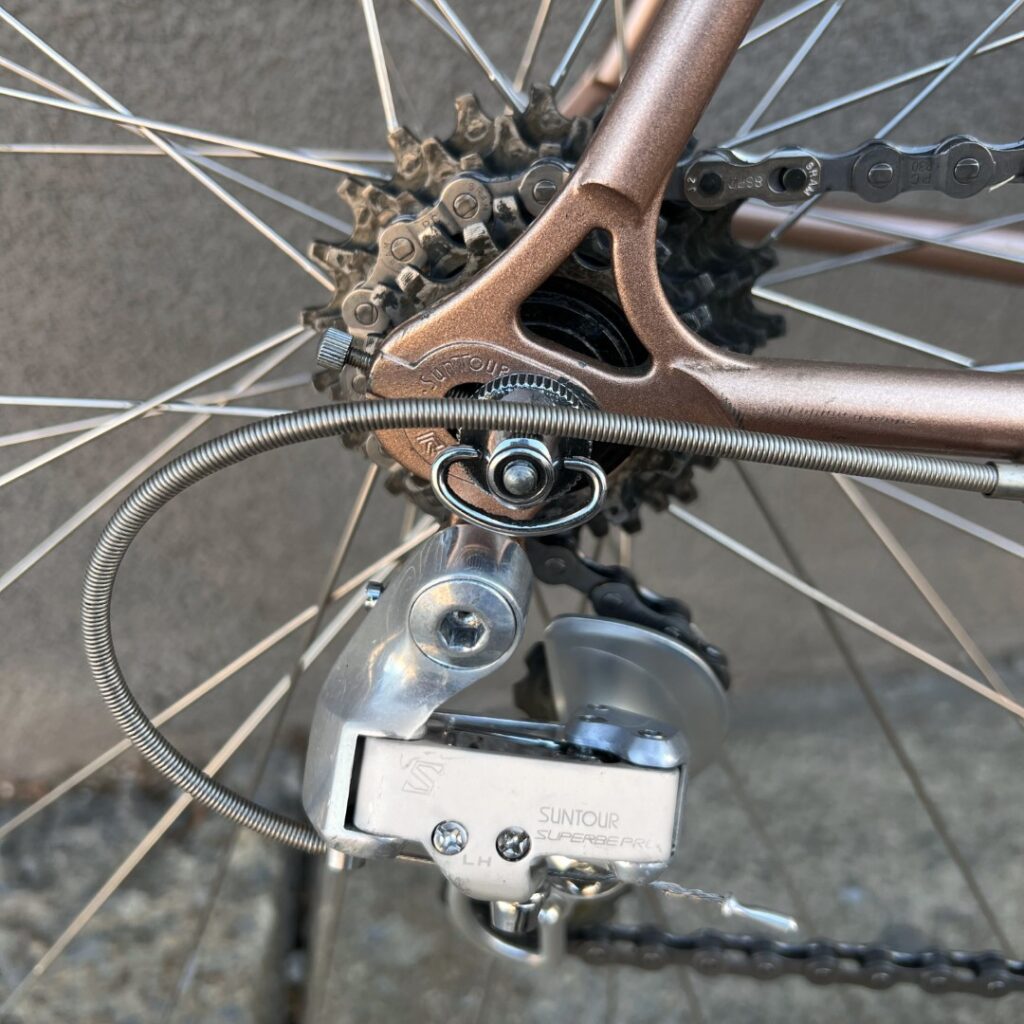
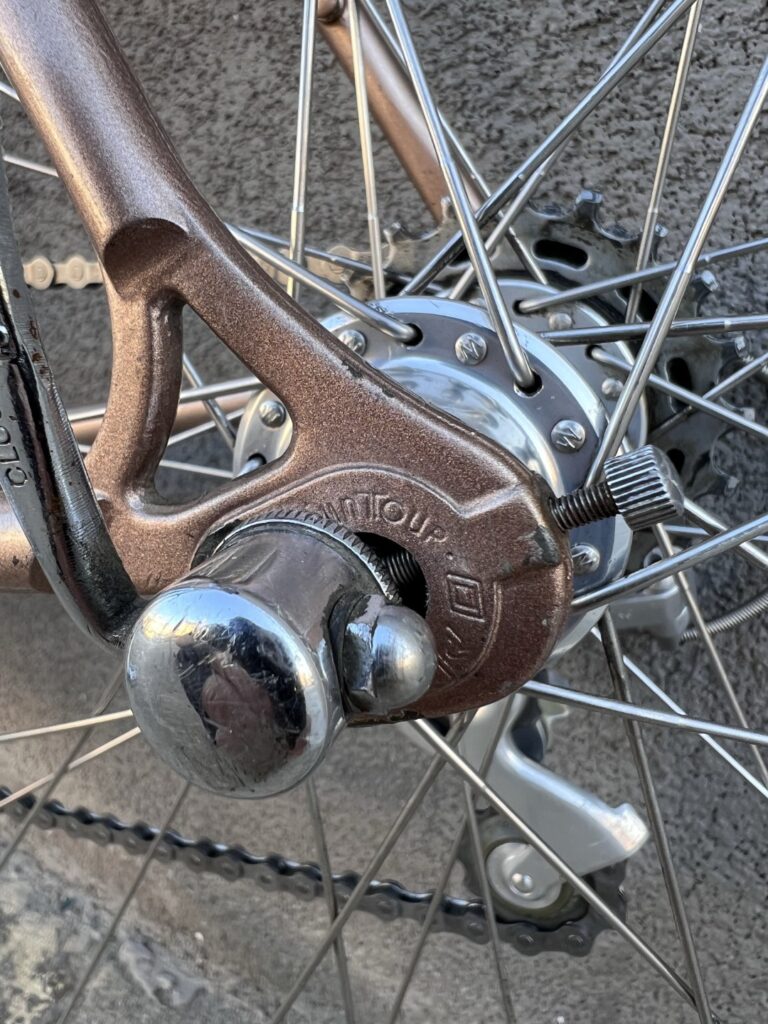
Loving this source of next-level procrastination, both beats and bikes. Love learning the stories behind the bikes.